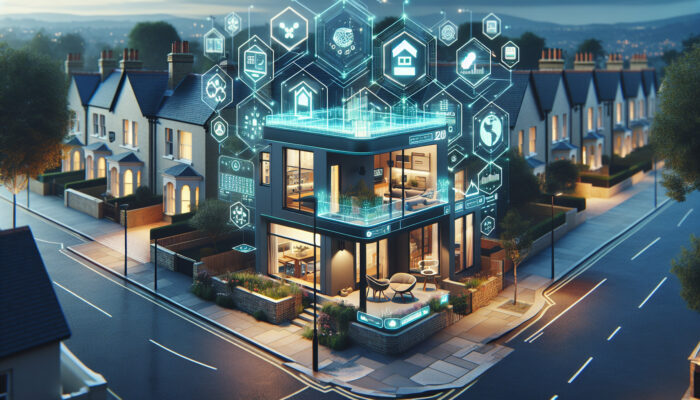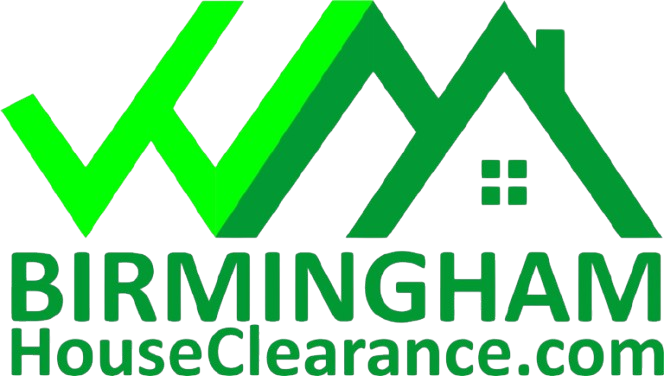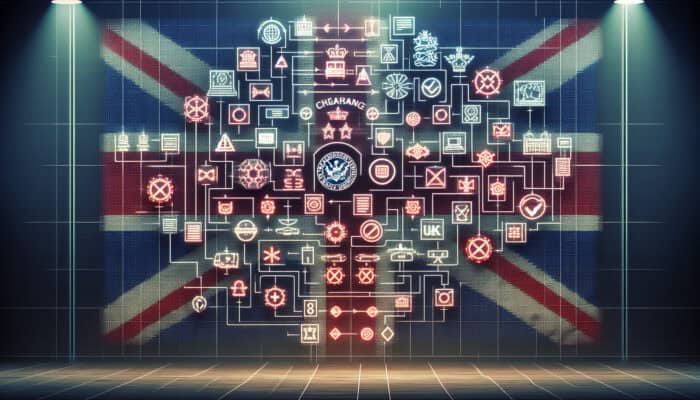Understanding the Concept of Remote Home Clearing
What is Remote Home Clearing?

Clearing a UK Home Remotely Greenly: Remote home clearing is an innovative process that enables homeowners to manage and declutter their properties from a distance, utilising advanced digital tools and services. This modern approach is gaining popularity across the United Kingdom, particularly among those seeking to streamline their lives while embracing an eco-friendly ethos. Thanks to technological advancements, homeowners can now coordinate clearing tasks remotely, creating a more efficient and personalised clearing process that caters to individual needs and circumstances.
Remote clearing enables homeowners to interact with service providers through platforms that simplify communication and scheduling, making it easier to oversee the clearing process. The incorporation of virtual consultations and real-time updates allows homeowners to maintain control and visibility throughout their clearing efforts. As more individuals become aware of their environmental impact, the demand for such sustainable solutions is anticipated to rise significantly in the foreseeable future.
Exploring the Advantages of Eco-Friendly Clearing
The benefits of eco-friendly clearing extend far beyond simple decluttering; they encompass principles such as sustainability, waste reduction, and promoting a greener lifestyle. By prioritising environmentally friendly practices, homeowners actively contribute to environmental conservation efforts within the UK. For example, implementing a zero-waste policy during the clearing process can drastically reduce the volume of rubbish sent to landfills and minimise the overall environmental footprint.
Additionally, eco-friendly clearing methods often involve the reuse and recycling of items, which not only diminishes waste but also fosters a circular economy. Homeowners have the opportunity to donate usable items to local charities or discover innovative ways to repurpose them within their households. This practice not only benefits the environment but also supports community initiatives and local causes, underscoring the importance of social responsibility in our daily lives.
Essential Tools for Effective Remote Management
Utilising the appropriate digital tools can significantly enhance the success of remote home clearing. Numerous applications and platforms are available to help homeowners manage their inventory, schedule tasks, and communicate with service providers. For example, apps like Trello or Asana are invaluable for organising tasks and tracking progress, while video conferencing platforms like Zoom facilitate virtual consultations with clearing professionals.
Moreover, inventory management applications enable homeowners to catalogue their belongings, streamlining the process of deciding what to keep, donate, or discard. Communication tools, such as WhatsApp or dedicated project management software, are vital for maintaining consistent contact with service providers and ensuring adherence to eco-friendly practices. Ultimately, technology plays a crucial role in making remote home clearing more efficient, streamlined, and environmentally conscious.
Insights from Experts on Eco-Friendly Remote Clearing in the UK

What Characterises an Eco-Friendly Clearing Method?
An eco-friendly clearing method is defined by practices that significantly minimise environmental impact. Key practices that characterise such methods include:
- Prioritising recycling and responsible disposal of materials.
- Utilising biodegradable products throughout the clearing process.
- Choosing service providers who adhere to eco-friendly standards.
- Encouraging the reuse of items within the community.
- Minimising the use of single-use plastics and other non-recyclable materials.
- Implementing energy-efficient practices during the clearing process.
Understanding what makes a method sustainable is essential for effective remote management. Homeowners should seek services that align with these principles, as they not only contribute to a healthier planet but also often result in cost savings through reduced disposal fees and the opportunity to repurpose valuable items.
How Can Technology Improve Eco-Friendly Clearing Practices?
The impact of technology on the efficiency and sustainability of home clearing initiatives is profound. By streamlining various processes, technology can effectively reduce waste and enhance communication. For instance, apps such as Depop or eBay enable homeowners to sell unwanted items online, thereby extending the lifecycle of these items and reducing the need for new purchases. Similarly, platforms like Freecycle connect individuals eager to donate items with those in need, promoting reuse within local communities.
Furthermore, AI-powered virtual assistants can aid homeowners in creating personalised cleaning plans tailored to their specific needs and preferences. These advanced tools optimise the clearing process by offering practical insights and reminders, seamlessly integrating eco-friendly practices. As the UK increasingly adopts a digital-first approach, the role of technology in facilitating eco-friendly clearing will continue to evolve and expand.
What Obstacles Might You Encounter During Remote Clearing?

While remote clearing presents numerous advantages, it also introduces unique challenges that homeowners must navigate. One significant obstacle is ensuring effective communication with service providers. Misunderstandings may arise when instructions are unclear, resulting in suboptimal outcomes. Establishing a robust communication framework is crucial to mitigate this risk and ensure that all parties are aligned and informed.
Another challenge involves ensuring that eco-friendly practices are consistently adhered to throughout the clearing process. Homeowners must verify that service providers are following environmentally responsible methods, which can be difficult to monitor remotely. Regular check-ins and updates can help maintain accountability, but they require diligence and commitment. Ultimately, overcoming these challenges is crucial for the successful execution of remote home clearing.
Preparing Your UK Home for an Efficient Remote Clearing Process
What Items Should You Prioritise for Clearing?
When preparing your home for remote clearing, it is essential to focus on items that require immediate attention. Prioritise areas with perishable goods, such as food in the pantry or refrigerator, to prevent waste and unpleasant odours. Additionally, identify high-value items that may interest potential buyers or charities, ensuring they receive the attention they deserve during the clearing process.
Organising your clearing strategy by categorising items into ‘keep’, ‘donate’, ‘sell’, and ‘discard’ can significantly streamline the process. By addressing urgent items first, you can create a manageable workflow that allows you to focus on one area at a time. Documenting these decisions within a digital inventory will help track progress and maintain focus throughout your clearing journey.
How to Create an Inventory of Your Home Remotely
Creating a comprehensive inventory of your home can be accomplished remotely by utilising various digital tools. Follow these steps to create an effective inventory:
- Utilise inventory management apps like Sortly or Home Inventory.
- Take photographs of each item for visual documentation.
- Organise items by category, noting their condition and value.
- Assign priority levels to each item based on urgency or importance.
- Share the inventory with your chosen service providers to ensure transparency and facilitate collaboration.
This systematic method of inventory management is crucial for effective clearing. Having a detailed inventory in place will facilitate informed decision-making and enhance collaboration with service providers. Additionally, it serves as a clear record of your possessions, aiding in future planning and organisation.
Selecting the Right Service Providers for Eco-Friendly Clearing
Choosing trustworthy service providers who understand and prioritise eco-friendly practices is vital for achieving successful remote clearing. Begin your search by researching local providers who specialise in eco-friendly clearing services. Online reviews and customer testimonials can provide valuable insights into their past performance and commitment to sustainable practices.
Once you have identified potential providers, engage in discussions to gauge their understanding of eco-friendly methods. Inquire about their recycling processes, waste disposal policies, and overall commitment to sustainability. Selecting service providers who align with your eco-friendly values ensures that your home is cleared responsibly and sustainably, ultimately contributing to your broader environmental goals.
Exploring Eco-Friendly Disposal and Recycling Options
What Items Are Recyclable in the UK?
Understanding which items can be recycled is crucial for effective, eco-friendly clearing efforts. In the UK, many household items are recyclable, including:
- Plastics (consult local guidelines for specific types).
- Paper and cardboard products.
- Glass containers and bottles.
- Certain electronic devices (e-waste).
- Metals such as aluminium cans.
- Textiles and clothing are in good condition.
Familiarising yourself with these recycling options helps with sustainable waste management. It is essential to know your local recycling facilities and schedules to ensure that recyclable items are disposed of appropriately. By actively engaging in recycling, homeowners can significantly reduce their waste footprint while contributing to the broader goal of environmental sustainability in the UK.
How to Dispose of Hazardous Waste Properly
Proper disposal of hazardous waste is critical for both safety and environmental protection. Items such as batteries, chemicals, and electrical equipment require special handling and must be taken to designated facilities in the UK. Many local councils offer specific drop-off points for hazardous materials, often at recycling centres or designated collection events.
To ensure compliance with local regulations, research the guidelines provided by your local authority regarding the disposal of hazardous waste. Additionally, many retailers offer take-back schemes for specific items, such as batteries or electronics, providing an accessible means for responsible disposal. Understanding and adhering to these protocols is essential to safeguard both your health and the environment during the clearing process.
Donating and Reusing Items for Eco-Friendly Clearing
Donating usable items to charities or discovering new uses for them within the community is a vital aspect of eco-friendly clearing. Not only does this practice promote sustainability, but it also supports local causes and those in need. Many UK charities, such as Oxfam or the British Heart Foundation, welcome donations of clothing, household goods, and furniture, often providing collection services for larger items to facilitate the process.
In addition to donating, consider repurposing items within your household. For example, old furniture can be refurbished, while textiles can be transformed into unique crafts or home decor. By thinking creatively about how to reuse items, homeowners can contribute to waste reduction while fostering a communal spirit of sharing and sustainability.
Research-Backed Advantages of Remote Eco-Friendly Home Clearing
What Are the Environmental Advantages?
The environmental benefits of clearing a home remotely and in an eco-friendly manner are substantial. One significant advantage is the reduction of the carbon footprint achieved through effective waste management and recycling practices. By opting for eco-friendly clearing methods, homeowners can minimise waste and ensure that recyclable materials are diverted from landfills.
Actionable steps for homeowners to measure their environmental impact include tracking the amount of waste recycled, calculating the carbon emissions saved by donating rather than discarding items, and utilising eco-friendly transportation methods for delivering items to recycling centres or charities. Such practices not only benefit the environment but also foster a culture of sustainability within the community.
How Does Eco-Friendly Clearing Affect Your Mental Health?
Clearing a home can have a profound impact on mental health by alleviating stress and improving overall living conditions. Research highlights that decluttering spaces can lead to significant improvements in mental well-being, fostering a sense of control and accomplishment. A tidy environment has been shown to reduce anxiety, increase focus, and create a more positive living atmosphere.
In the UK, studies indicate that individuals who engage in regular clearing and organisation not only experience reduced stress but also report enhanced overall satisfaction with their living spaces. The psychological benefits of a decluttered home extend beyond aesthetics; they contribute to improved mental clarity and emotional health, making the clearing process a valuable investment in personal well-being.
What Economic Advantages Come with Eco-Friendly Clearing?
Choosing eco-friendly clearing methods can lead to substantial economic advantages. By prioritising recycling and reusing items, homeowners can save money through reduced disposal costs and minimise the need for new purchases. For instance, selling unwanted items online or donating them can generate income or tax deductions, further enhancing the financial benefits of eco-friendly clearing.
Moreover, the long-term savings associated with adopting a sustainable lifestyle can be significant. By reducing consumption and focusing on reusable goods, homeowners can lower their overall expenses while contributing to environmental preservation. Economically, eco-friendly clearing represents not only a responsible choice but also a strategic financial decision for homeowners in the UK.
Effective Monitoring and Management of the Clearing Process
What Tools Can Assist with Monitoring the Clearing Process?
Monitoring tools are essential for overseeing the clearing process and ensuring that everything remains on track. Various apps and digital platforms can be employed to provide real-time updates and control over the process. For example, project management tools such as Monday.com or ClickUp can help you create timelines, assign tasks, and effectively monitor progress.
Additionally, communication platforms like Slack or Microsoft Teams facilitate seamless interaction between homeowners and service providers, enabling quick updates and feedback. Utilising these digital tools not only enhances organisation but also fosters transparency and accountability, ensuring a smooth and efficient clearing process.
How to Communicate Effectively with Service Providers?
Effective communication with service providers is crucial for ensuring a smooth clearing process. Clear instructions and regular updates are key components of successful collaboration. Begin by clearly defining your expectations and desired outcomes from the outset, providing comprehensive details about your eco-friendly goals and any specific requirements you may have.
Regular check-ins via phone calls, emails, or messaging apps can help maintain alignment and address any emerging issues promptly. Setting up a communication schedule can also facilitate structured interactions, allowing for ongoing feedback and adjustments as necessary. By prioritising open and transparent communication, homeowners can help ensure that the clearing process aligns with their eco-friendly objectives.
How to Ensure Eco-Friendly Practices Are Consistently Followed?
To ensure that eco-friendly practices are adhered to during the clearing process, regular checks and feedback are essential. Establishing clear guidelines for service providers regarding waste disposal, recycling, and sustainability practices is crucial for maintaining standards. Regular progress updates can help identify any areas where eco-friendly practices may be slipping or overlooked.
Implementing a system of accountability, such as periodic reviews or consultations, can further reinforce the importance of these practices. By actively engaging with service providers and monitoring their adherence to eco-friendly principles, homeowners can safeguard the integrity of their clearing efforts and ensure lasting positive impacts on the environment.
How to Set and Track Your Clearing Goals?
Setting clear goals for the clearing process is fundamental to maintaining focus and efficiency. Begin by defining specific objectives, such as the number of items to clear or the timeline for completing various tasks. Break these goals down into manageable milestones, making it easier to track progress and stay motivated throughout the clearing journey.
Utilising digital tools like Google Sheets or Trello can help you monitor your goals and deadlines effectively. Regular reviews of your progress will help identify any areas where adjustments may be necessary, ensuring that you remain on track. By establishing and tracking your clearing goals, you can enhance the overall success of the process and achieve a more organised, eco-friendly home.
Managing Unexpected Challenges During the Clearing Process
Unexpected challenges are an inevitable aspect of any clearing project. Whether it’s a delay from a service provider or a sudden realisation that an item cannot be recycled as anticipated, having a contingency plan in place is essential for continuity. Begin by identifying potential risks and developing proactive strategies to address them.
For instance, maintain a flexible timeline that allows for adjustments as issues arise. Establishing a buffer period for unexpected delays can help alleviate stress and keep the project moving forward. Additionally, fostering open communication with service providers will facilitate quick problem-solving when challenges do occur. By preparing for the unforeseen, homeowners can ensure a smoother clearing process and maintain momentum towards their eco-friendly goals.
Understanding the Legal Considerations for Remote Clearing in the UK
What Should You Know About Waste Disposal Regulations?
Compliance with UK waste disposal regulations is crucial for both legal and environmentally friendly clearance. These regulations outline the handling procedures for various types of waste, including recyclable materials and hazardous items. Understanding these laws is crucial for homeowners engaged in clearing activities, as non-compliance can result in fines and legal consequences.
Homeowners should familiarise themselves with their local council’s guidelines on waste disposal, including recycling schedules and specific handling procedures for hazardous materials. Consulting resources, such as the Environment Agency, can provide valuable insights into best practices for waste management, ensuring that homeowners can clear their properties responsibly and in compliance with the law.
How to Handle Data Protection During the Clearing Process?
Data protection laws are paramount when clearing a home, especially if digital devices are involved. Adhering to UK data protection regulations is crucial for safeguarding personal information and preventing potential breaches of privacy. For instance, before disposing of old electronics, homeowners should ensure that all data is securely wiped to protect their sensitive information.
Additionally, when engaging service providers, ensure they are compliant with data protection laws and understand the importance of safeguarding your personal information. Establishing clear protocols for data handling during the clearing process will help mitigate risks and foster trust with service providers.
What Permits and Licenses Might Be Required?
Certain activities during home clearing may require permits or licenses in the UK. For example, disposing of specific types of waste, such as large appliances or construction materials, may necessitate special permissions. Being aware of these requirements is essential for the effective planning and execution of your clearing efforts.
Research your local regulations to determine what permits may be necessary. Consulting with service providers who specialise in eco-friendly clearing can also provide clarity on any legal requirements, ensuring that your clearing process is compliant and efficient.
What Are Your Liability Concerns During Clearing?
Understanding liability during remote clearing is crucial to preventing legal issues. As a homeowner, you may be responsible for any accidents or damages that occur during the clearing process, particularly if hired services are involved. To mitigate liability concerns, ensure that all service providers have appropriate insurance coverage for their activities.
Establishing clear contracts that outline the responsibilities of each party involved in the clearing process is a proactive approach that helps protect your interests and reduces the likelihood of disputes arising from unforeseen circumstances.
How to Ensure Safe Disposal of Hazardous Materials?
Proper handling and disposal of hazardous materials is mandated by UK law to protect health and the environment during clearing. Items such as chemicals, batteries, and electronic waste must be disposed of at designated facilities equipped to handle these materials safely.
To ensure compliance, research local disposal guidelines and identify facilities that accept hazardous waste. Many councils provide specific drop-off points or collection days for hazardous materials, making it easier for homeowners to fulfil their legal obligations while contributing to environmental safety.
Proven Strategies for Eco-Friendly Remote Home Clearing in the UK
What Are the Best Practices for Eco-Friendly Clearing?
Implementing best practices for eco-friendly clearing involves minimising waste, maximising recycling, and selecting sustainable service providers. Homeowners should aim to incorporate the following strategies into their clearing processes:
- Conduct thorough research to find eco-friendly service providers.
- Establish a clear recycling plan for different materials.
- Encourage the reuse of items within the community.
- Implement energy-efficient procedures while clearing.
- Stay informed about local recycling regulations and practices.
Offering expert analysis on these effective, eco-friendly clearing strategies can empower homeowners to make informed decisions. By incorporating sustainability into their clearing efforts, homeowners can make a positive contribution to the environment while achieving their decluttering goals.
How to Plan and Execute a Successful Clearing Project?
Planning and executing a clearing project requires careful consideration and organisation. Begin by setting clear goals regarding what you intend to achieve through the clearing process. Create a detailed schedule that outlines timelines for each phase of the project, ensuring that you allocate ample time for both planning and execution.
Monitor progress closely and remain open to adjusting plans as needed. Effective communication with service providers will keep everyone aligned and informed about expectations. By fostering collaboration and maintaining flexibility, homeowners can navigate their clearing project smoothly and achieve positive results.
Evaluating the Success of Your Clearing Efforts
Assessing the success of your clearing efforts is crucial for understanding the impact of your actions and planning future projects effectively. Key metrics to consider include the amount of waste recycled, the financial savings generated from reusing items, and the overall satisfaction with the clearing process.
Gathering feedback from service providers can provide insights into their experience and help identify areas for improvement. Conducting a post-project review will not only help you celebrate your achievements but also provide valuable lessons for future clearing initiatives, ensuring continuous improvement in your eco-friendly practices.
How to Choose the Right Eco-Friendly Clearing Services?
Selecting the right eco-friendly clearing services involves thorough research and evaluation of potential providers. Begin by identifying services that prioritise sustainability and adhere to eco-friendly practices. Look for reviews and testimonials to gauge their reputation and reliability in the field.
Once you have narrowed down your options, engage in discussions with each provider to understand their approach to eco-friendly clearing. Inquire about their recycling policies, disposal methods, and commitment to reducing environmental impact. Choosing a service that aligns with your values will enhance the effectiveness of your clearing efforts and contribute to a greener future.
Future Trends in Remote and Eco-Friendly Home Clearing
What Innovations Are on the Horizon?
As the landscape of remote and eco-friendly home clearing continues to evolve, several innovations are emerging that promise to enhance efficiency and sustainability. One notable trend is the development of integrated home management systems that allow homeowners to coordinate their cleaning efforts across multiple devices seamlessly. These systems offer real-time updates, task management features, and even AI-driven recommendations for more eco-friendly practices.
Another innovation is the growing emphasis on data analytics to measure the impact of clearing efforts. By leveraging data, homeowners can track their environmental footprint and identify areas for improvement, ultimately leading to more informed decision-making throughout the clearing process.
Exploring Sustainable Cleaning Technologies
The exploration of eco-friendly cleaning technologies is crucial for reducing environmental impact while maintaining effectiveness. Biodegradable cleaning products, for instance, are gaining popularity as an alternative to conventional chemicals that can harm the environment. Additionally, energy-efficient devices, such as steam cleaners and vacuum cleaners with HEPA filters, help to minimise energy consumption and improve indoor air quality.
Investing in these sustainable cleaning technologies not only benefits the environment but also enhances the overall efficiency of the cleaning process. Homeowners who prioritise eco-friendly cleaning solutions contribute to a healthier planet while achieving their decluttering goals.
Advancements in Remote Monitoring and Control
Advancements in remote home management systems are making it easier for homeowners to monitor and control their home’s heating and cooling processes in real-time. These systems allow for remote access to various aspects of home management, including task assignments, inventory tracking, and seamless communication with service providers.
By enabling homeowners to oversee their clearing efforts from anywhere, these technologies enhance convenience and efficiency. Additionally, integrating smart home devices can further streamline the process, allowing for automated scheduling and reminders. As remote monitoring and control technologies continue to advance, homeowners will find their clearing efforts more manageable and aligned with eco-friendly practices.
Frequently Asked Questions
What is remote home clearing?
Remote home clearing is the process of managing and decluttering a home from a distance using digital tools and services, allowing homeowners to oversee the clearing process without being physically present.
What are the benefits of eco-friendly clearing?
Eco-friendly clearing promotes sustainability by reducing waste, encouraging recycling, and reusing items, which supports environmental conservation within the UK.
What tools can help with remote home management?
Digital tools, such as inventory management apps, project management platforms, and communication apps, facilitate effective remote home management and enhance collaboration with service providers.
What items should I prioritise for clearing?
Prioritise perishable goods, high-value items, and belongings that require immediate attention to create a manageable workflow during the clearing process.
How do I create an inventory of my home remotely?
Create a remote inventory by using digital tools, taking photographs of items, categorising them, and sharing the inventory with service providers for transparency.
How can I choose reliable service providers?
Research local service providers, read reviews, and engage in discussions to ensure they understand and adhere to eco-friendly practices during the clearing process.
What can be recycled in the UK?
In the UK, items like plastics, paper, glass, electronics, and certain textiles can be recycled, so it’s essential to know your local recycling regulations.
How should hazardous waste be disposed of?
Hazardous waste must be taken to designated facilities, and it’s important to research local disposal guidelines to ensure compliance with regulations.
What are the legal considerations for clearing a home?
Legal considerations include understanding waste disposal regulations, data protection compliance, and any necessary permits or licenses for clearing activities.
How can I ensure eco-friendly practices are followed?
To ensure eco-friendly practices, establish guidelines for service providers, maintain regular communication, and conduct checks throughout the clearing process.






